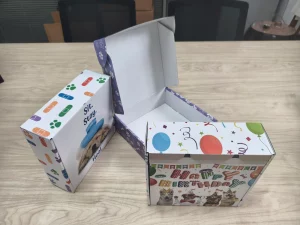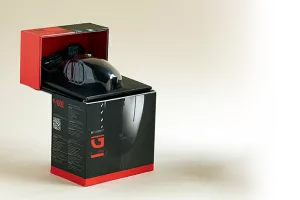Understanding Packaging Quality: Methods to Ensure Durable Corrugated Boxes
Packaging plays a crucial role in protecting products during transportation and storage. Specifically, in the packaging industry, ensuring the quality of corrugate materials is essential to maintain the structural integrity and durability of packaging solutions. This article will explore various test methods and quality control measures to ensure high standards in corrugated box testing. By understanding these methods, you can better assess the right box for your packaging needs.
جدول المحتويات
What is Packaging Quality?
Packaging quality refers to the ability of the packaging to protect its contents effectively while maintaining structural integrity throughout its lifecycle. This includes factors like strength, durability, and the ability to withstand environmental conditions. High-quality packaging ensures that products reach consumers in optimal condition, thus enhancing product quality and customer satisfaction.
Why Quality Control is Crucial in Packaging?
Quality control in the packaging industry involves inspecting and testing packaging materials and products to ensure they meet specified quality standards and requirements. This process prevents defects and ensures that packaging solutions provide the necessary protection for products. By implementing effective quality control measures, manufacturers can reduce waste, lower costs, and improve customer satisfaction.
Types of Packaging: Choosing the Right Box for Your Needs
There are many types of packaging available, but الصناديق المموجة are among the most widely used due to their durability and versatility. Here are key types of packaging to consider:
- Cardboard Box: Lightweight and suitable for lightweight products.
- الصناديق المموجة: Offers excellent protection and is ideal for shipping heavy or delicate items.
- Custom Packaging Boxes: Tailored to meet specific packaging needs and branding requirements.
Each type of packaging material serves different functions, so it’s important to select the right one based on the product and distribution requirements.
How Corrugate Material Impacts Packaging Quality?
Corrugate material consists of a fluted corrugated sheet sandwiched between one or two flat linerboards. This structure provides strength and rigidity, making it ideal for packaging. The quality of corrugate impacts the strength of corrugated boxes, including their stacking strength and resistance to compression and bursting.
For businesses looking to maintain high-quality packaging, understanding the properties of corrugated materials is essential. This includes knowing how much load the box can carry and how many boxes can be stacked together without compromising integrity.

Understanding Corrugated Box Testing
To ensure the durability and reliability of الصناديق المموجة, several test methods are used:
- Compression Test: Measures the resistance of a box during stacking. It is essential to evaluate how boxes can withstand vertical pressure.
- Burst Strength Test: Assesses the force required to rupture the box. This is crucial for knowing how much weight and pressure the box can handle.
- Chemical Analysis in Corrugated Box Testing: Analyzes the composition and quality of the corrugated board, ensuring the materials meet quality standards.
These testing methods help in assessing packaging quality, allowing manufacturers to improve their packaging solutions.
How to Conduct a Box Compression Test?
إن box compression test is a common method used to determine the compression strength of corrugated boxes:
- Prepare the Box: Ensure it is set up correctly and according to specification.
- Place in Tester: Use a machine to apply vertical pressure on the box.
- Record Results: Note the point at which the box compresses or fails.
This test helps to ensure quality by identifying the maximum load a box can withstand, which is critical for shipping and storage efficiency.
Ensuring Packaging Quality Through Rigorous Testing
Ensuring the quality of your packaging requires packaging testing procedures that verify the packaging’s ability to protect the product under various conditions. Rigorous testing includes evaluating packaging durability, assessing the weight a box can carry, and ensuring it meets the necessary quality standards.
By conducting these tests, manufacturers ensure that their packaging solutions are up to industry standards and that they can protect products effectively during transit.
The Importance of Packaging Inspection
Packaging inspection is a crucial aspect of quality control. It involves checking the quality of packaging materials throughout the production process to ensure that they meet required quality specifications. This includes the inspection of both physical properties and aesthetic details, such as print quality and logo placement.
Effective packaging inspection strategies help in maintaining the quality of the box and ensuring that products are free from damage when they reach the consumer.

How Quality Control Measures Improve Product and Packaging?
التنفيذ quality control measures in the packaging process improves the overall quality of both the product and packaging. It ensures that the materials used are durable and that the packaging design is suitable for the intended use. This proactive approach reduces errors, minimizes product returns, and enhances brand reputation.
For high standards, businesses should ensure that their packaging meets quality requirements through regular testing and inspection.
How Testing Methods Ensure Packaging Quality?
Testing methods play a vital role in protecting products and ensuring the quality of packaging:
- Stacking Strength: Determines how well a box can support weight when stacked.
- Chemical Analysis: Verifies the composition and consistency of packaging materials.
- Compression and Burst Tests: Evaluate the structural integrity of packaging solutions.
These testing methods provide valuable insights into the packaging’s ability to withstand physical and environmental stresses, ensuring that it meets customer packaging requirements and expectations.
Bullet Point Summary: Key Takeaways
- Packaging Quality: Essential for product protection and customer satisfaction.
- ضبط الجودة: Prevents defects and ensures high standards.
- Corrugate Materials: Important for durability and strength.
- Testing Methods: Include compression and burst strength tests.
- Inspection: Critical for maintaining packaging consistency and quality.

Internal Links
- الصناديق المموجة
- صناديق قلابة علوية مخصصة مع إغلاق مغناطيسي
- صناديق بنمط الدرج مع إدراج
- صناديق التغليف المخصصة
By understanding the importance of packaging quality and the methods to ensure it, businesses can enhance their packaging solutions, ensuring that products remain safe and appealing throughout their journey to the consumer.








